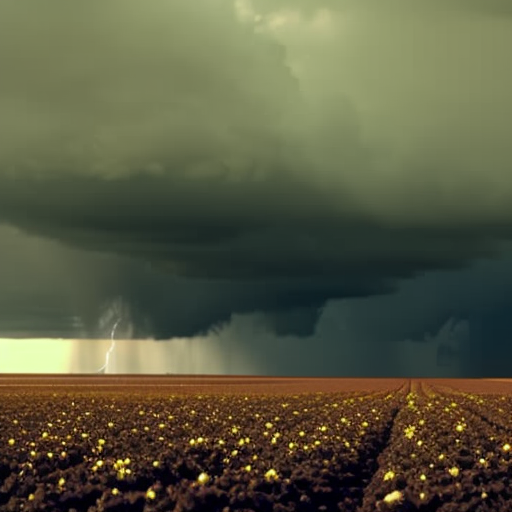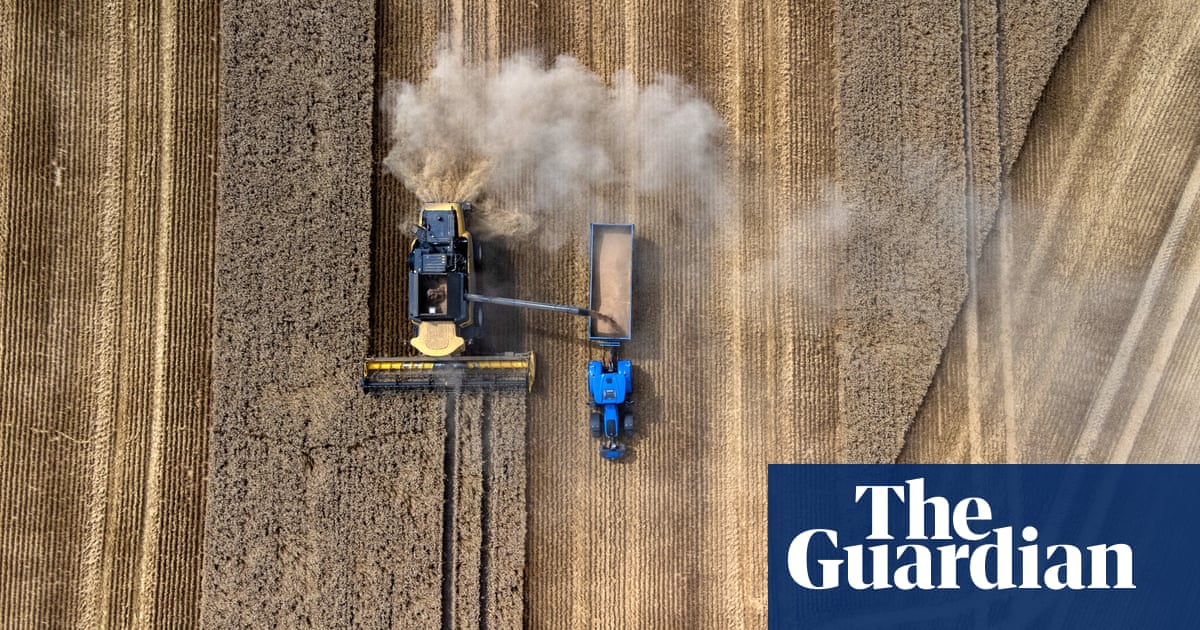
Record-breaking Rain Reduces Food Production in the UK

Record-breaking rain in recent months has drastically reduced the amount of food produced in the UK, farming groups have said.
Impact on Agriculture
- Livestock and crops have been affected as fields have been submerged since last autumn.
- According to the Met Office, 1,695.9mm of rain fell from October 2022 to March 2024, the highest amount for any 18-month period in England in recorded history.
- The UK will be reliant on imports for wheat in the coming year and potentially beyond due to the drastic reduction in yields.
- Wheat production is down 15% since November, the biggest reduction in cropped areas since 2020.
- Oilseed rape is down 28%, the biggest reduction since the 1980s, and winter barley is down 22% at 355,000 hectares, the biggest reduction since 2020.
Implications for Food Prices
Prices of goods such as bread and other food made using grains are already rising and are likely to rise further, according to the Agriculture and Horticulture Development Board (AHDB).
Quality of Crops at Risk
The areas that have been planted are likely to produce poor-quality crops as the soil is waterlogged, and some crops are likely to fail. The AHDB said: “The unfavorable weather is putting the yield at risk of being significantly reduced.”
Import Dependency
David Eudall, the board’s economics and analysis director, said: “We may see wheat production fall from about 14m tonnes to about 10m tonnes or less, so wheat processors, flour millers and bakers will be looking to import greater quantities of wheat this season for production into bread and animal feed.
“If we see continued lower production from poor weather, stubborn costs (eg fertiliser) and unprofitable prices, we will continually need more imports and further expose our market for a staple product in bread to the world trade.”
Impact on Livestock Farming
The National Farmers’ Union (NFU) has reported that the rain, combined with unseasonably low spring temperatures, is taking a toll on livestock farming, with a “bleak attrition rate for lambs born this spring already clear”.
Farmers have said they are facing a crisis. The NFU vice-president, Rachel Hallos, said: “People should be in no doubt about the immense pressure UK farm businesses are under thanks to this unprecedented and constant rain. It’s no exaggeration to say a crisis is building. While farmers are bearing the brunt of it now, consumers may well see the effects through the year as produce simply doesn’t leave the farm gate.
Farming Recovery Fund
The government has opened a farming recovery fund scheme, under which eligible farmers can access grants of between £500 and £25,000 to return their land to the condition it was in before exceptional flooding due to Storm Henk in January.
The farming minister, Mark Spencer, said: “I know how difficult this winter has been for farmers, with extreme weather such as Storm Henk having a devastating impact on both cropping and grazing, as well as damaging property and equipment.
“The farming recovery fund will support farmers who suffered uninsurable damage with grants of up to £25,000, and sits alongside broader support in our farming schemes to improve flood resilience.”
SDGs, Targets, and Indicators
-
SDG 2: Zero Hunger
- Target 2.1: By 2030, end hunger and ensure access by all people, in particular the poor and people in vulnerable situations, including infants, to safe, nutritious, and sufficient food all year round.
- Indicator 2.1.1: Prevalence of undernourishment
- Indicator 2.1.2: Prevalence of moderate or severe food insecurity in the population, based on the Food Insecurity Experience Scale (FIES)
-
SDG 13: Climate Action
- Target 13.1: Strengthen resilience and adaptive capacity to climate-related hazards and natural disasters in all countries.
- Indicator 13.1.1: Number of deaths, missing persons, and directly affected persons attributed to disasters per 100,000 population
- Indicator 13.1.2: Number of countries that adopt and implement national disaster risk reduction strategies in line with the Sendai Framework for Disaster Risk Reduction 2015-2030
Analysis
The issues highlighted in the article are connected to SDG 2: Zero Hunger and SDG 13: Climate Action.
SDG 2: Zero Hunger
The article discusses how record-breaking rain has drastically reduced the amount of food produced in the UK, leading to a potential reliance on imports for wheat. This directly relates to SDG 2, which aims to end hunger and ensure access to safe and nutritious food for all people. The reduction in food production and potential increase in food prices can contribute to food insecurity and hinder progress towards achieving SDG 2.
SDG 13: Climate Action
The article highlights the exceptional amount of rain and flooding in the UK, which is attributed to climate-related hazards. This connects to SDG 13, which focuses on climate action and aims to strengthen resilience and adaptive capacity to climate-related hazards. The extreme weather conditions mentioned in the article can have negative impacts on agriculture, livestock farming, and food production, highlighting the need for climate resilience measures.
Based on the content of the article, the following targets and indicators can be identified:
Target 2.1: By 2030, end hunger and ensure access by all people, in particular the poor and people in vulnerable situations, including infants, to safe, nutritious, and sufficient food all year round.
- Indicator 2.1.1: Prevalence of undernourishment
- Indicator 2.1.2: Prevalence of moderate or severe food insecurity in the population, based on the Food Insecurity Experience Scale (FIES)
Target 13.1: Strengthen resilience and adaptive capacity to climate-related hazards and natural disasters in all countries.
- Indicator 13.1.1: Number of deaths, missing persons, and directly affected persons attributed to disasters per 100,000 population
- Indicator 13.1.2: Number of countries that adopt and implement national disaster risk reduction strategies in line with the Sendai Framework for Disaster Risk Reduction 2015-2030
Table: SDGs, Targets, and Indicators
| SDGs | Targets | Indicators |
|---|---|---|
| SDG 2: Zero Hunger | Target 2.1: By 2030, end hunger and ensure access by all people, in particular the poor and people in vulnerable situations, including infants, to safe, nutritious, and sufficient food all year round. |
|
| SDG 13: Climate Action | Target 13.1: Strengthen resilience and adaptive capacity to climate-related hazards and natural disasters in all countries. |
|
Behold! This splendid article springs forth from the wellspring of knowledge, shaped by a wondrous proprietary AI technology that delved into a vast ocean of data, illuminating the path towards the Sustainable Development Goals. Remember that all rights are reserved by SDG Investors LLC, empowering us to champion progress together.
Source: theguardian.com

Join us, as fellow seekers of change, on a transformative journey at https://sdgtalks.ai/welcome, where you can become a member and actively contribute to shaping a brighter future.





